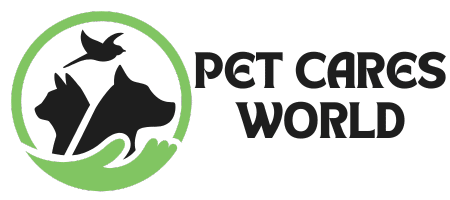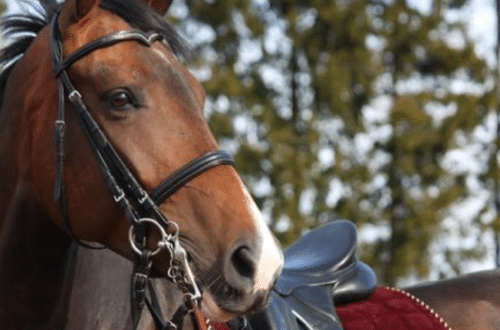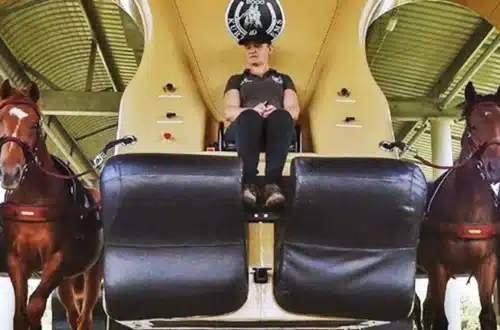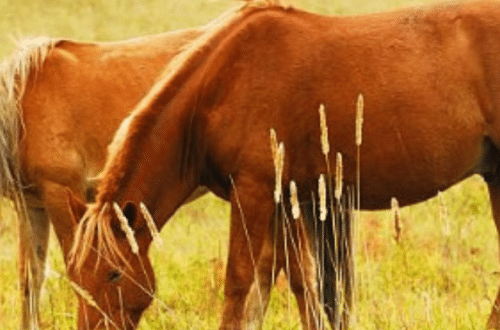If you’ve ever seen your horse mildly trembling, shaking, or quivering, you may have wondered what causes this odd shivering behavior. Known as shivers in horses, this condition typically affects the hindquarters by contracting the hind leg muscles. While the exact cause is unknown, it is considered a neuromuscular disorder. Shivers can range from barely noticeable to severe enough to make riding difficult. Luckily, most cases are mild. This article explores the symptoms, risk factors, and potential triggers for shivers so you can better understand why your horse shakes.
You’ll learn techniques to minimize shivering episodes and when to seek veterinary help for this unusual equine condition. Soon, you’ll be ready to tackle shivers head-on.
What Is Shivers In Horses: Defining Shivers in Horses

Shivers in horses, or equine shivers or shivering, is a neuromuscular disorder characterized by involuntary muscle tremors, particularly in the hind limbs. It’s essential to comprehend that shivers are not a specific disease but symptoms that manifest peculiarly. Understanding the underlying factors contributing to shivers is crucial for effective management.
Deciphering the Causes of Shivers
Shivers can result from various factors, including genetic predisposition, metabolic imbalances, and neurological abnormalities. While the exact cause remains elusive in some cases, researchers have identified a connection between shivers and specific breeds, highlighting the hereditary aspect of this condition.
Additionally, imbalances in trace minerals and disruptions in the nervous system may contribute to the onset of shivers.
The Intricacies of Shivers: Signs and Symptoms
Identifying shivers in horses can be challenging, as the symptoms may vary in intensity and manifestation. Common signs include hyperflexion of the hind limbs, trembling, and difficulty lifting the hind legs.
Horse owners should pay close attention to any unusual behaviors, such as reluctance to move or stiffness, as these may indicate the presence of shivers. Timely recognition of symptoms is crucial for prompt intervention and management.
Recognizing Equine Neuromuscular Disorders
Equine neuromuscular disorders encompass a spectrum of conditions affecting horses’ nervous and muscular systems. Recognizing these disorders, including shivers, is essential for proactive care and maintaining the well-being of our equine companions.
By understanding the nuances of these disorders, horse owners can collaborate with veterinarians to establish effective preventive measures and treatment plans.
The Treatment Terrain
Upon confirming a diagnosis of shivers, horse owners often find themselves at a crossroads, wondering about the best course of action. While there is no definitive cure for shivers, various management strategies can enhance the quality of life for affected horses.
These may include dietary modifications, exercise routines, and, in some cases, medication. Collaborating with a knowledgeable veterinarian is crucial in developing a tailored approach for each case.
Crafting a Holistic Approach to Equine Health
The well-being of horses extends beyond the absence of illness; it encompasses a holistic approach that integrates nutrition, exercise, and regular veterinary care. Horse owners should prioritize a balanced diet of essential nutrients and a consistent exercise regimen. Regular veterinary check-ups can aid in the early detection of potential health issues, allowing for proactive intervention.
Shedding Light on Shivers: A Glimpse into Research and Development
The equestrian community continually benefits from ongoing research and development aimed at unraveling the complexities of equine health. Scientists and veterinarians collaborate to enhance our understanding of conditions like shivers, paving the way for innovative treatments and preventive measures. Horse owners can contribute to this collective effort by staying informed and actively participating in research initiatives.
Equine Health Advancements
As advancements in equine health continue to unfold, the equestrian world stands on the brink of transformative breakthroughs. The landscape of equine medicine is evolving from genetic studies to exploring novel treatment modalities. Embracing these advancements empowers horse owners to provide the best possible care for their beloved animals.
Embracing a Proactive Stance: Shivers Awareness and Education
Despite its enigmatic nature, shivers need not be a source of fear for horse owners. Through awareness and education, the equestrian community can collectively contribute to the well-being of horses. Whether recognizing early signs, implementing preventive measures, or supporting ongoing research, every action fosters a healthier, more resilient equine population.
Equine Wellness Advocacy
Advocacy for equine wellness involves caring for individual horses and contributing to the broader dialogue surrounding horse health. By championing initiatives that promote responsible breeding, research participation, and information dissemination, horse owners play a pivotal role in shaping the future of equine medicine.
Frequently Asked Questions About Shivers
Q: Can shivers be prevented through specific breeding practices?
- A: While there is a genetic component to shivers, definitive prevention through breeding practices remains challenging. However, responsible breeding and avoiding mating horses with a known history of shivers can mitigate the risk.
Q: Are specific horse breeds more susceptible to shivers?
- A: Yes, certain breeds, such as draft horses and Warmbloods, have shown a higher prevalence of shivers. Genetic predisposition plays a role in these cases.
Q: How can horse owners support a horse diagnosed with shivers?
- A: Providing a well-balanced diet, regular exercise, and a comfortable living environment are crucial for supporting a horse with shivers. Consultation with a veterinarian for a tailored care plan is advisable.
Q: Is shivers a progressive condition, and can it lead to severe disability?
- A: Shivers can vary in severity, and their progression is unpredictable. While some horses may lead relatively everyday lives with management, others may experience more pronounced symptoms that can impact mobility.
Conclusion
What shivers in horses are paramount for horse owners. Shivers, a neuromuscular disorder affecting the hindquarters, presents challenges in diagnosis and management. From recognizing symptoms to navigating treatment options, proactive care is essential.
Embracing advancements in equine health and participating in awareness initiatives ensures a resilient equine community. By championing responsible practices, horse owners contribute to the ongoing dialogue, shaping a future where horses thrive despite the enigmatic nature of shivers.






